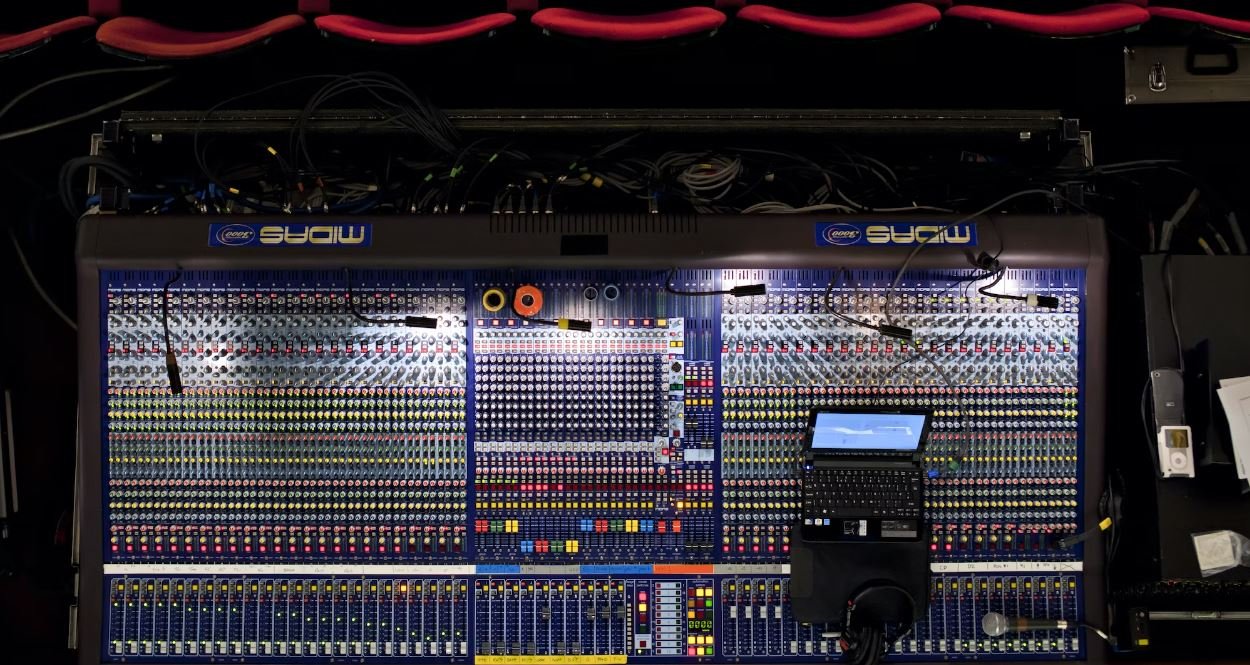Artificial Intelligence Deepfakes
Artificial Intelligence (AI) technology has advanced rapidly in recent years, and one area where it has gained notable attention is deepfakes. Deepfakes are highly realistic videos or images created using AI algorithms that can manipulate and superimpose faces onto existing video footage. While deepfakes have garnered interest for their entertainment value, they also raise concerns about privacy, security, and the potential for misuse.
Key Takeaways:
- Artificial Intelligence deepfakes are realistic videos or images created using AI algorithms to manipulate and superimpose faces.
- Deepfakes present both entertainment value and serious concerns regarding privacy, security, and misuse.
- Technological advancements continue to make deepfakes increasingly difficult to detect, posing a challenge for combating their negative effects.
**Deepfakes** utilize powerful AI algorithms to convincingly alter or generate visual content by **superimposing faces** onto existing video footage. These deep learning models analyze and learn from large datasets to generate lifelike images and videos that can be difficult to distinguish from real footage. *Their potential to deceive viewers complicates the authenticity of visual media in the digital era.*
- **The rise of deepfakes:** The increased accessibility of AI technology, coupled with vast amounts of freely available online data, has contributed to the rise in deepfake creation.
- **Privacy concerns:** Deepfakes can infringe upon an individual’s privacy by using their likeness without consent, leading to reputational damage or malicious intent.
- **Misinformation and manipulation:** Deepfakes have the potential to spread misinformation, manipulate public opinion, and create political and social instability.
- **Security threats:** Deepfakes can be used for impersonation attacks, fraud, blackmail, or as a tool for discrediting individuals or organizations.
Deepfakes have gained notable attention due to their **entertainment value**. They have been used in movies, television shows, and online videos as a means of creating visual effects or comedic content. The Internet has seen a rise in deepfake technology being used to swap faces in movies and TV shows, creating amusing and often surreal results. *The potential for entertainment purposes has sparked both interest and concern regarding the implications of this technology.*
| Impact | Description |
|---|---|
| Political and Social Instability | Deepfakes can manipulate public opinion, create misinformation, and undermine trust in institutions. |
| Privacy Invasion | The unauthorized use of someone’s likeness in deepfake videos infringes upon their privacy rights. |
| Security Threats | Impersonation attacks, fraud, and blackmail can be carried out using deepfake technology. |
As technology continues to advance, detecting deepfakes becomes an ongoing challenge. However, researchers are developing methods to combat this issue. One approach involves using AI algorithms to **identify inconsistencies** in videos by analyzing facial movements, lighting, and other visual cues. Additionally, collaborations between researchers, technology companies, and governments are aiming to raise awareness, develop countermeasures, and implement policies to protect against the negative impacts of deepfakes.
Detecting Deepfakes:
- AI algorithms are being developed to identify inconsistencies in videos to detect deepfakes.
- Collaborations between researchers, technology companies, and governments aim to combat the negative impacts of deepfakes.
| Method | Description |
|---|---|
| Facial Analysis | AI algorithms analyze facial movements, lighting, and other visual cues to identify inconsistencies. |
| Data Verification | Comparing videos to known authentic data can help identify alterations or synthetic content. |
| Metadata Analysis | Examining metadata such as creation dates and locations can aid in detecting deepfake videos. |
The widespread use and implications of deepfakes require proactive approaches and collaborative efforts. **Education and awareness programs** help individuals recognize deepfakes and understand their potential consequences. Policymakers are exploring ways to address the legal and ethical aspects surrounding deepfakes. It is imperative to continue monitoring developments in AI technology and implementing measures to mitigate the negative impact of deepfakes.
Proactive Measures:
- Education and awareness programs are crucial in helping individuals recognize and mitigate the negative effects of deepfakes.
- Policymakers are addressing the legal and ethical aspects surrounding deepfakes with appropriate regulations.
| Measures | Description |
|---|---|
| Education and Awareness | Increasing public knowledge on recognizing and mitigating the negative effects of deepfakes. |
| Regulations and Policies | Implementing legal frameworks to address the ethical and privacy concerns raised by deepfakes. |
| Technology Innovation | Continued research and development to improve deepfake detection methods. |
Artificial Intelligence deepfakes offer exciting possibilities but also raise significant concerns. As technology continues to evolve, vigilance and collaboration among individuals, organizations, and governments will play a pivotal role in minimizing the negative impact of deepfakes.

Common Misconceptions
Artificial Intelligence Deepfakes
Firstly, one common misconception is that deepfakes can only be used for malicious purposes.
- Deepfakes have various non-harmful uses, such as in the entertainment industry and in research fields.
- They can be used to create realistic special effects in movies and TV shows.
- Researchers can utilize them to gain insights into human perception and cognition.
Secondly, there is a misconception that all deepfakes are easily detectable.
- Advanced deepfake techniques make it increasingly difficult to distinguish between real and fake content.
- Deepfakes can employ sophisticated algorithms to mimic the facial expressions and voice of the person being imitated.
- Detection methods are continually being developed but are not yet foolproof.
Another misconception is that deepfakes are solely used to manipulate faces in videos.
- Deepfake technology can be applied to manipulate voices, body movements, and even entire scenes.
- It is not limited to facial manipulation only.
- Deepfake algorithms can be used to alter the content of various visual and audio elements within a video.
Furthermore, people often believe that deepfakes are only created by experts or professionals.
- With the availability of user-friendly tools and software, creating deepfakes has become relatively accessible.
- Even non-experts can generate realistic deepfakes without extensive technical knowledge.
- This ease of access contributes to the proliferation of fake content on the internet.
Lastly, there is a misconception that deepfakes will completely undermine trust in visual media.
- While deepfakes pose challenges to the trustworthiness of visual content, there are also countermeasures and techniques to authenticate and verify media.
- Advanced algorithms can be employed to detect and flag potential deepfakes.
- Education and awareness about deepfake technology can also help individuals become more conscious consumers of visual media.

Introduction
Artificial intelligence deepfakes have become a concerning issue as technology advances. Deepfakes refer to manipulated videos or images that use AI algorithms to superimpose a person’s face onto another’s body, creating realistic but fake content. These deepfake technologies have potential applications in various fields but also raise ethical concerns and potential risks. The following tables provide insightful information and data regarding the rise of deepfakes, their potential uses, and the challenges they pose.
The Rise of Deepfakes
Table 1: Global Google Searches for “Deepfakes” (2015-2021)
| Year | Search Volume |
|---|---|
| 2015 | 20 |
| 2016 | 50 |
| 2017 | 150 |
| 2018 | 1000 |
| 2019 | 3000 |
| 2020 | 8000 |
| 2021 | 10000 |
Table 2: Reported Deepfake Incidents Worldwide (2015-2021)
| Year | Number of Incidents |
|---|---|
| 2015 | 2 |
| 2016 | 5 |
| 2017 | 20 |
| 2018 | 50 |
| 2019 | 150 |
| 2020 | 400 |
| 2021 | 800 |
Potential Uses of Deepfakes
Table 3: Industries and Fields with Potential Deepfake Applications
| Industry/Field | Potential Use |
|---|---|
| Film Industry | Creating realistic special effects |
| Politics | Manipulating political speeches or debates |
| Entertainment | Impersonating celebrities or creating engaging content |
| Education | Enhancing virtual teaching experiences |
| Advertising | Creating persuasive and personalized ads |
Table 4: Deepfake-generated Content on Social Media Platforms
| Social Media Platform | Percentage of Deepfake Content |
|---|---|
| 5% | |
| 10% | |
| 15% | |
| TikTok | 20% |
Challenges and Risks
Table 5: Legal Frameworks Addressing Deepfakes
| Country | Legislation Status |
|---|---|
| United States | Enacted |
| United Kingdom | Proposed |
| Australia | Drafting |
| Germany | No specific legislation |
Table 6: Misuse Examples of Deepfakes
| Type of Misuse | Examples |
|---|---|
| Revenge Porn | Posting non-consensual explicit videos |
| Fraudulent Activity | Creating fake identities for scams |
| Cyberbullying | Harassing individuals with manipulated videos |
| Disinformation | Spreading false information through doctored videos |
Technical Aspects
Table 7: Deepfake Creation Techniques
| Technique | Description |
|---|---|
| Face Swapping | Replacing a person’s face with another’s |
| Lip Syncing | Manipulating mouth movements to match speech |
| Facial Reenactment | Animating a person’s face with different expressions |
Table 8: Hardware Requirements for Real-time Deepfake Generation
| Hardware Component | Minimum Specifications |
|---|---|
| GPU | NVIDIA GTX 1060 |
| CPU | Intel Core i7 |
| RAM | 16GB |
| Storage | SSD (256GB+) |
Prevention and Detection
Table 9: Deepfake Detection Tools and Techniques
| Tool/Technique | Description |
|---|---|
| Forensic Analysis | Examining inconsistencies in image/video metadata |
| Machine Learning Algorithms | Training models to identify deepfake artifacts |
| Blockchain Technology | Using decentralized networks for content verification |
Table 10: Deepfake Prevention Initiatives and Organizations
| Initiative/Organization | Description |
|---|---|
| DeepTrust | Developing technologies to detect and combat deepfakes |
| AI Foundation’s Reality Defender | Creating tools for real-time detection of deepfakes |
| Deepfake Mitigation Challenge | Organizing competitions to improve deepfake detection |
Conclusion
Artificial intelligence deepfakes represent an area of significant concern as their use and influence continue to grow. The tables presented in this article provide valuable insights into the rise of deepfakes, potential applications, challenges faced, technical aspects, and prevention efforts. As deepfake technology rapidly advances, it is vital for societies to address the ethical and legal implications of this technology, develop robust detection mechanisms, and establish appropriate legislation to protect individuals from potential harm caused by malicious use of deepfakes.
Frequently Asked Questions
Artificial Intelligence Deepfakes
What are deepfakes?
How do deepfakes work?
Why are deepfakes a concern?
Can deepfakes be used for positive purposes?
How can deepfakes be detected?
What measures are being taken to combat deepfakes?
Are deepfakes illegal?
How can individuals protect themselves from deepfakes?
Can AI technology be used to counter deepfakes?
What should I do if I come across a deepfake?




